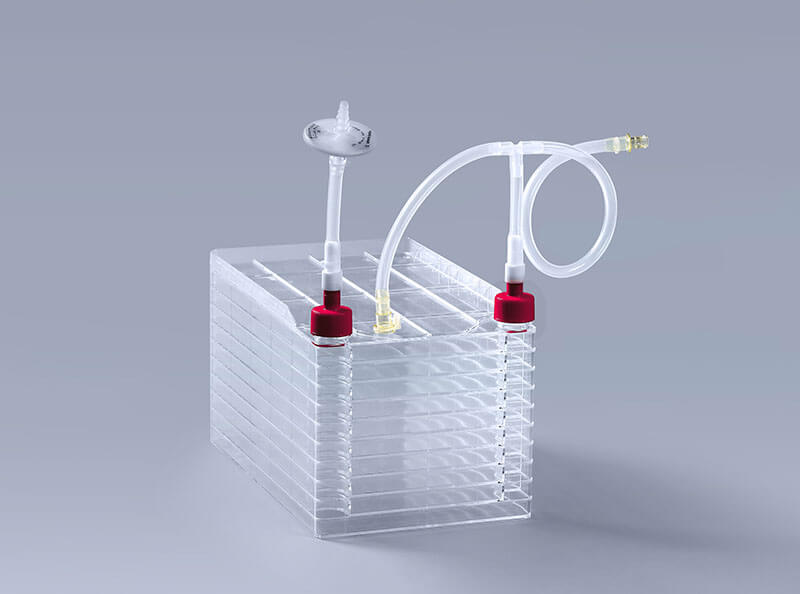Cell factories are multi-layered cell culture containers widely used in various life science applications. Their primary uses include the following:
Cell Culture and Expansion: Cell factories are extensively utilized in laboratory research for cell culture and expansion. The different layer configurations provide varying scales of culture space, allowing for flexibility from small-scale laboratory studies to large-scale cell production.
Drug Screening and Development: In drug research and development, cell factories serve as tools for drug screening and evaluation. By cultivating cells in the multi-layer structure, the cell factory can simulate in vivo environments, helping to assess the efficacy and toxicity of drugs, thereby accelerating the development of new pharmaceuticals.

Biotechnology and Bioproduction: In biotechnology and bioengineering, cell factories play an important role in producing recombinant proteins, antibodies, and vaccines. Their multi-layer structure optimizes space and resource use, enhancing production efficiency.
Tissue Engineering and Regenerative Medicine: In tissue engineering and regenerative medicine, cell factories are used for culturing and expanding stem cells, fibroblasts, and other cell types. These cells are then used to prepare tissue-engineered scaffolds or for direct transplantation in tissue regeneration, such as skin or cartilage repair.
Gene Editing and Gene Expression Studies: In research involving gene-editing techniques like CRISPR/Cas9, cell factories provide a platform for large-scale culturing of genetically edited cells. They are also used for investigating gene expression regulation, signaling pathways, and other molecular mechanisms.
In summary, the multi-layer structure and flexible usage of cell factories make them valuable tools in life sciences. They are instrumental in various fields such as cell culture, drug development, bioproduct manufacturing, tissue engineering, and genetic research.
The FAI climbed 5.9 percent year-on-year in the first 11 months of 2018, quickening from the 5.7-percent growth in Jan-Oct, the National Bureau of Statistics (NBS) said Friday in an online statement.
The key indicator of investment, dubbed a major growth driver, hit the bottom in August and has since started to rebound steadily.
In the face of emerging economic challenges home and abroad, China has stepped up efforts to stabilize investment, in particular rolling out measures to motivate private investors and channel funds into infrastructure.
Friday's data showed private investment, accounting for more than 60 percent of the total FAI, expanded by a brisk 8.7 percent.
NBS spokesperson Mao Shengyong said funds into weak economic links registered rapid increases as investment in environmental protection and agriculture jumped 42 percent and 12.5 percent respectively, much faster than the average.
In breakdown, investment in high-tech and equipment manufacturing remained vigorous with 16.1-percent and 11.6-percent increases respectively in the first 11 months. Infrastructure investment gained 3.7 percent, staying flat. Investment in property development rose 9.7 percent, also unchanged.
 English
English


















































